Ferns are a popular choice of plant for home and yard decor. Their beautiful green, fan-shaped leaves appeal to the eye and are often used in gardens and landscaping. A common fear for gardeners and homeowners is their beautiful plants being damaged, destroyed, or eaten by wildlife. Who is the main culprit? Deer! Deer are opportunistic eaters, and when they are hungry with limited options, there is almost no plant they won’t take a nibble out of! After all, feasting on front yard foliage is their specialty. So, that begs the question, are ferns deer resistant? This article will cover if your ferns are deer resistant and various ways to keep deer away from your plants so your gardens can bloom beautifully and you can be stress-free.
Are Ferns Deer Resistant?
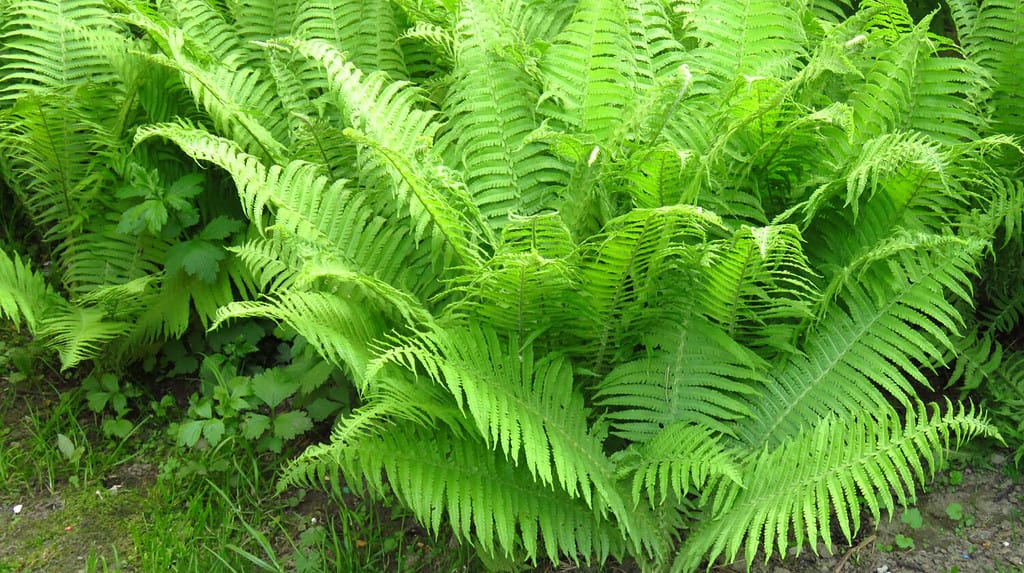
Ferns and wood ferns are categorized as deer-resistant plants.
©Przemyslaw Muszynski/Shutterstock.com
Let’s be frank: the safety of your plants from your dear deer friends depends on their food supply. If the deer in your local area do not have enough resources, they will be hungry. And there is very little that a hungry deer will not eat. This is particularly true between the months of October through February. As the weather cools, many plants and deer food sources die, limiting their options. According to the Old Farmer’s Almanac, the fern (Osmunda) and the Wood Fern (Dryopteris marginalis) are not likely to be consumed by deer and, therefore, are categorized as deer resistant.
Although these non-flowering plants are not the top choice on the deer’s menu, having them in your garden or landscaping may not be a large enough deterrent to keep them away. Deer are intelligent and opportunistic animals, and where there is a will, there is a way for the deer. If you want to protect your garden, here are ten ways to help protect your plants from hungry deer.
10 Ways to Keep Deer Away From Your Plants
While there are various methods to keeping deer away from your plants and gardens, here are the top ten ways proven effective at keeping the deer away.
1. Install a Fence

Experts suggest an 8 to 12-foot fence for keeping deer out of your yard.
©Mirjam Claus/Shutterstock.com
Similarly to wanting to keep the peering eyes of neighbors away, fences also do a great job of keeping hungry deer out of your yard. Having this physical border around your yard is a great deer deterrent; however, not all fences have the same efficacy level. For example, any fence 6 feet or shorter will do nothing to stop a hungry deer. In order to keep deer out of your yard, experts suggest having a fence at least 8 feet tall. If your chosen fence is made of see-through material, the suggested height increases to 12 feet.
You need such a high fence because deer can jump much higher than the average person thinks. A deer can often jump vertically 8 to 10 feet high, meaning it can clear your 6-foot picket fence with no issues. While different species of deer have different jumping capabilities, it is still recommended to have a fence of at least 8 feet to keep these hungry critters away from your plants.
2. Plant Deer-Resistant Plants
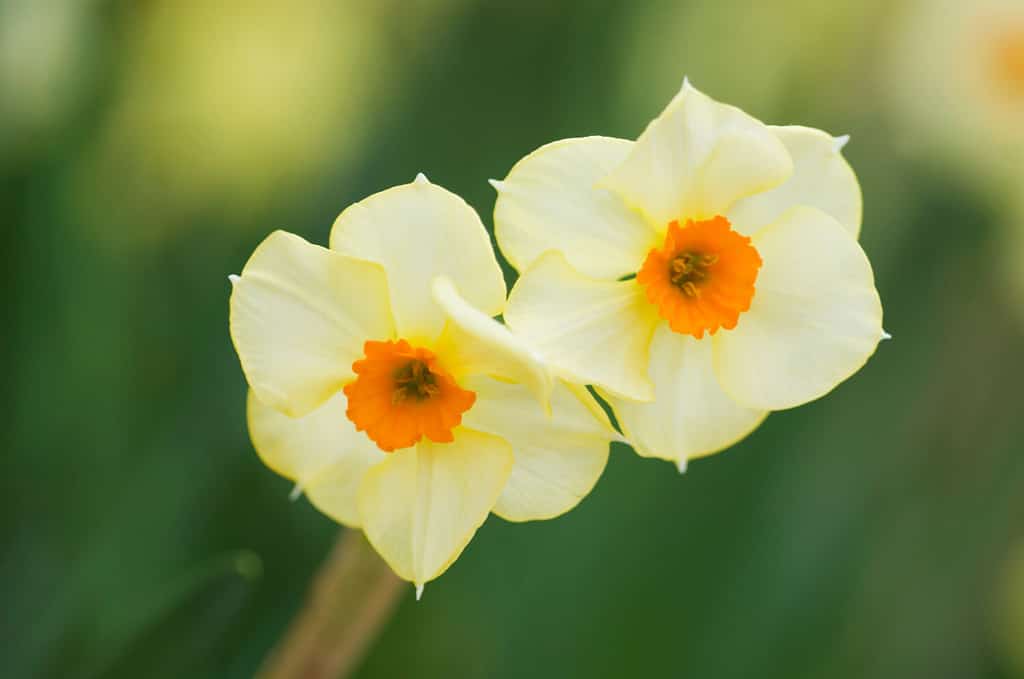
Daffodils are among the flowers that are considered poisonous to deer.
©J Need/Shutterstock.com
While deer are opportunistic and eat almost anything, some plants are off the menu. Planting these non-favorable plants in your garden can help make it look less appealing to the deer. Some definitely not deer-friendly flowers are daffodils, foxgloves, and poppies. Not only do deer not find these a tasty snack, but these flowers are actually poisonous to the deer. Additionally, deer will avoid flowers with a very strong scent or anything prickly. Below, you can see a shortened list of additional perennial and annual flowers deer will avoid and shrubs.
Perennial Flowers Deer Will Avoid
- Yarrow (Achillea)
- Lenton Rose (Helleborus x hyrridus)
- Bee Balm (Monarda)
Annual Flowers Deer Will Avoid
- African Marigold (Tagetes erecta)
- Chrysanthemum (Chrysanthemum x morifolum)
- Salvia (Salvia farinacea)
Shrubs Deer Will Avoid
- Boxwood (Buxus)
- Butterfly Bush (Buddleja davidii)
- Forsythia (Forsythia)
3. Be Strategic With Your Setup

In addition to planting non-deer-friendly plants, strategically plant them throughout your garden for the best results.
©Gift Culture Media/iStock via Getty Images
Planting flowers and shrubs that deer do not prefer will only work if your garden design is strategic. For example, do not clump all your deer-friendly flowers on one side of your garden and all your deer-avoidant flowers on the other. Be sure to intermix them when their care guidelines allow it. For example, you wouldn’t be able to plant a flower that loves full sun next to one that demands mostly shade. Another idea is to place the plants that the deer do not enjoy closest to the perimeter. Having plants that are poisonous or have strong odors or prickly leaves should help deter the deer from wanting to enter further into the garden where the more tasty plants may exist.
4. Create a Barrier or Perimeter

Deer do not like walking on unstable surfaces, so having a rock barrier around your garden can help act as a deer deterrent.
©Andrei Stepanov/Shutterstock.com
Besides the fence — which serves as the barrier or perimeter of your entire yard— you also want to have a barrier or perimeter for your garden. Having this additional barrier is sure to help keep the deer away. While you can opt to go with another fence around your garden, a more natural look may be more appealing to the eye. Having a rock garden perimeter is a great deer deterrent because it is not a stable walking surface. If the deer venture too close to your garden and begin to wobble on the uneven rock surfaces, they will most likely not feel safe enough to continue forward. Deer do not like walking on unstable surfaces, so creating one around your garden will surely help! However, be sure it is stable enough for you to maneuver around.
5. Use Deer Repellent
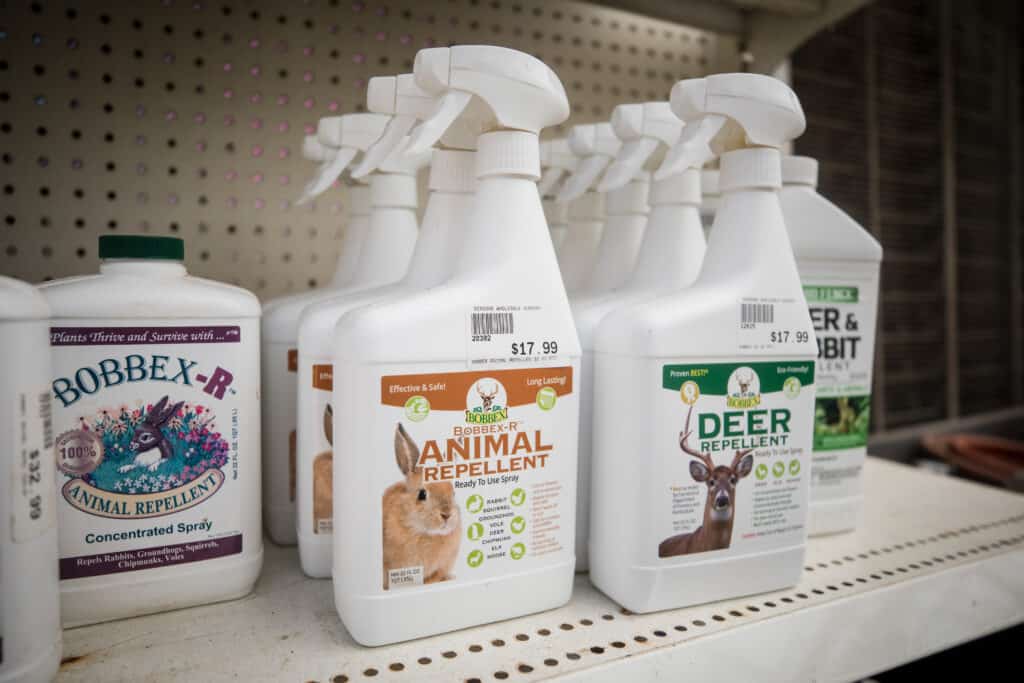
Both commercial and DIY deer repellents are great ways to keep deer away from your plants.
©Nicole Glass Photography/Shutterstock.com
You have an option of store-bought or homemade when it comes to deer repellent. If you are short on time or do not wish to make your own, you can easily purchase a variety of deer sprays at garden centers or online. However, if you want to make your own deer repellent at home, that is also a feasible option. There are a variety of different methods that you can try out at home. Some of the more popular DIY options for deer spray are garlic and cayenne pepper spray, soap and water solution, and a vinegar solution. You can spray these sprays onto your flowers and in your garden to help protect them from hungry deer.
6. Get Some Pets
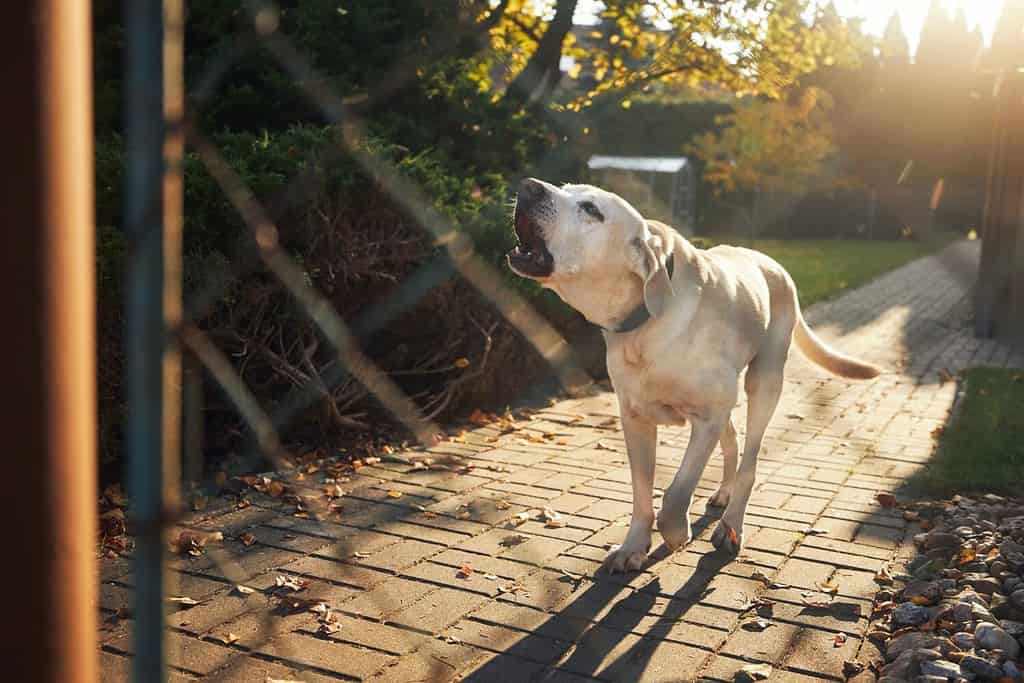
The bark of your dog can help to scare off approaching deer.
©Jaromir Chalabala/Shutterstock.com
While your cat or pet bird may not be seen as a threat to the deer if you have a dog, it can be one of your best deer deterrents. First and foremost, your dog’s bark could scare off an approaching deer. Are there areas in your home that provide vantage points of your garden? If your dog can see the garden and notices a deer or other animal enter your yard, its protective instincts may go off and begin to bark. However, if you and your dog cannot see your garden from within the home, letting them out multiple times a day so that they can make their presence known should be adequate. Additionally, if you see a deer approaching your garden, you can allow your dog out or alert your dog so that it can bark at the deer. Be warned; depending on your dog breed, deer can get quite big. While not aggressive animals, smaller dogs may get hurt if the deer is trying to defend itself.
Besides their barking, dogs have another deer deterrent factor on their side. Their urine! While the scent of the urine may not necessarily scare the deer away, it does alert them of the presence of another animal in the area, and if they are not overly hungry, that might help deter them from entering as well.
7. Get Clean! With Some Irish Spring
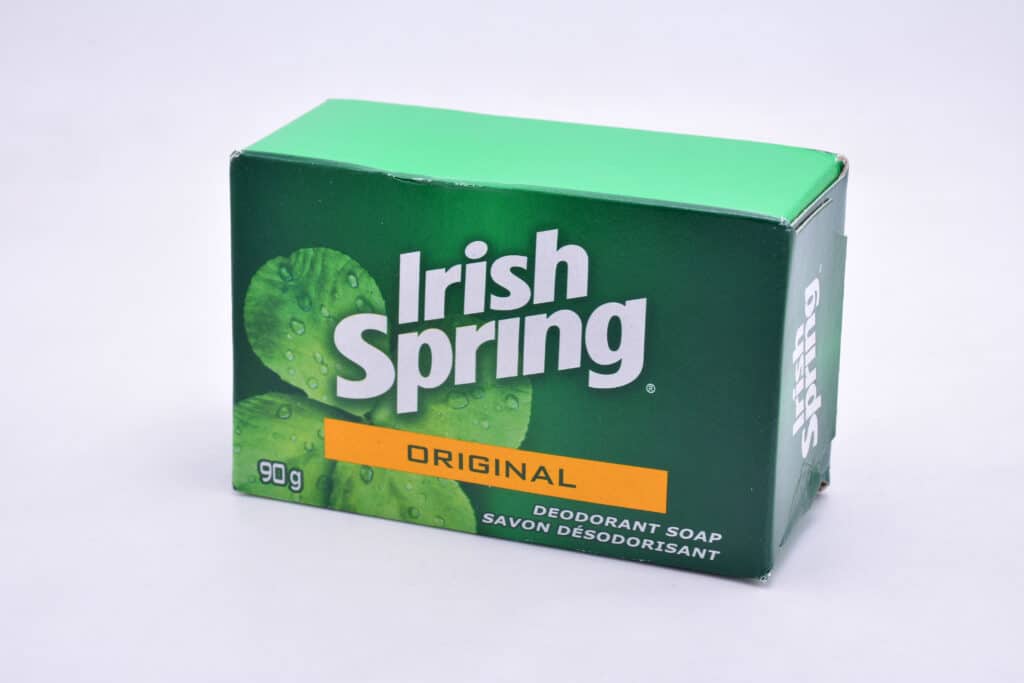
Deer and other animals strongly dislike the smell of Irish Spring soap.
©Walter Eric Sy/Shutterstock.com
Besides cleaning yourself, Irish Spring soap bars serve another purpose. Deer — and many other animals — hate the smell of this soap, so using it in your garden or around your flowers can serve as an additional warding-off sign for the deer. You can use a knife to carve the soap down and then sprinkle the shavings in your garden. Additionally, you could hang the bar of soap in a mesh bag and hang that bag in your garden. The smell from the soap should work for a space of 10 feet by 10 feet. Be sure to hang it at the height of the deer’s head so they have the best chance of smelling it.
8. Get Creative with Your Decor

Reflective objects create flashes of light that easily startle the deer.
Deer are easily spooked, so adding decor to your garden will help to keep them away. While they may not necessarily be scared of your Halloween decorations the same way a person would, scarecrows and bright lights can scare them off. However, it is not Halloween all year round, so what can you use instead of a scarecrow and orange pumpkin lights? One option to go with is reflective objects. Reflective objects create flashes of light that can easily startle the deer. Some objects that you can use as reflective decor are listed below:
- CDs and DVDs
- Aluminum foil
- Reflective ornaments
9. Use Motion-Activated Objects

You can program your sprinklers to be motion-activated. Motion-activated objects will startle the deer.
©iStock.com/MaYcaL
In addition to light flashes, deer are also wary of motion. When it is not a holiday, and you do not have your motion-sensor decorations out, you can use other forms of motion-sensor objects to help the deer steer clear of your home. For example, you can have a motion-activated sprinkler that would be triggered if a deer got too close to it. Additionally, you could have motion-activated alarms that make loud noises when the deer walk past it. Any motion-sensing object will startle the deer and discourage them from grazing on your plants.
10. Hire a Lawn Service
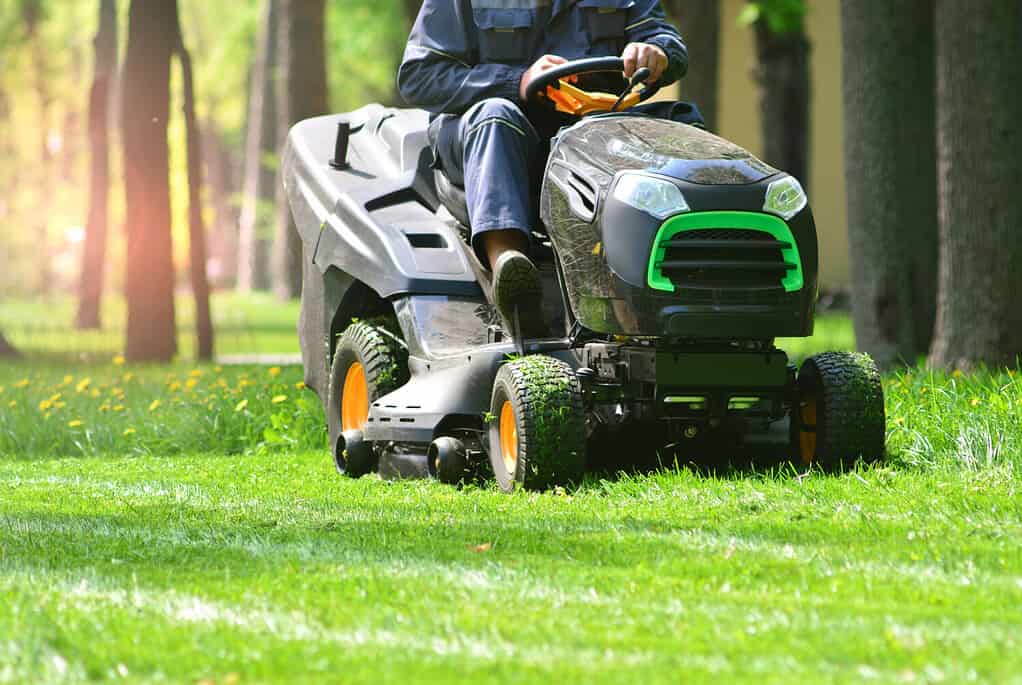
Having routine lawn care limits deer interaction with your flowers because it provides them with fewer places to hide and you with more visibility.
©Varavin88/Shutterstock.com
Although it may look much nicer to you to have a fresh-cut, polished lawn, it looks a lot less welcoming to the deer. Besides the fear factor of the loud lawnmowers moving about in your yard, there are some other reasons that having routine lawn maintenance is great for repelling deer. First, it removes any overgrown vegetation that could be in your yard. Deer are less likely to venture into wide open areas with no vegetation. Additionally, it grants you easier visibility to see if and when they enter your yard and gives the deer fewer places to hide.
Summary of the 10 Ways to Keep Deer Away From Your Plants
| Rank | Method | Tips |
|---|---|---|
| 1 | Install a Fence | Must be at least 8 feet high |
| 2 | Plant Deer-Resistant Plants | Daffodils, foxgloves, and poppies are poisonous to deer. |
| 3 | Be Strategic With Your Set-Up | Inter-mix your deer-friendly and non-deer-friendly plants. |
| 4 | Create a Barrier or Perimeter | Deer do not like to walk on uneven surfaces. |
| 5 | Use Deer Repellent | You can use commercial or homemade deer spray. |
| 6 | Get Some Pets | Dog’s barks can scare away deer. |
| 7 | Use Irish Spring Soap | Sprinkle shavings in your garden. |
| 8 | Get Creative With Your Decor | Hanging reflective objects can deter the deer. |
| 9 | Use Motion Activated Objects | Motion-activated sprinklers or alarms can keep deer away. |
| 10 | Hire a Lawn Service | Having routine lawn care keeps excess vegetation out of your yard and garden. |
The photo featured at the top of this post is © Danita Delimont/Shutterstock.com
Thank you for reading! Have some feedback for us? Contact the AZ Animals editorial team.







